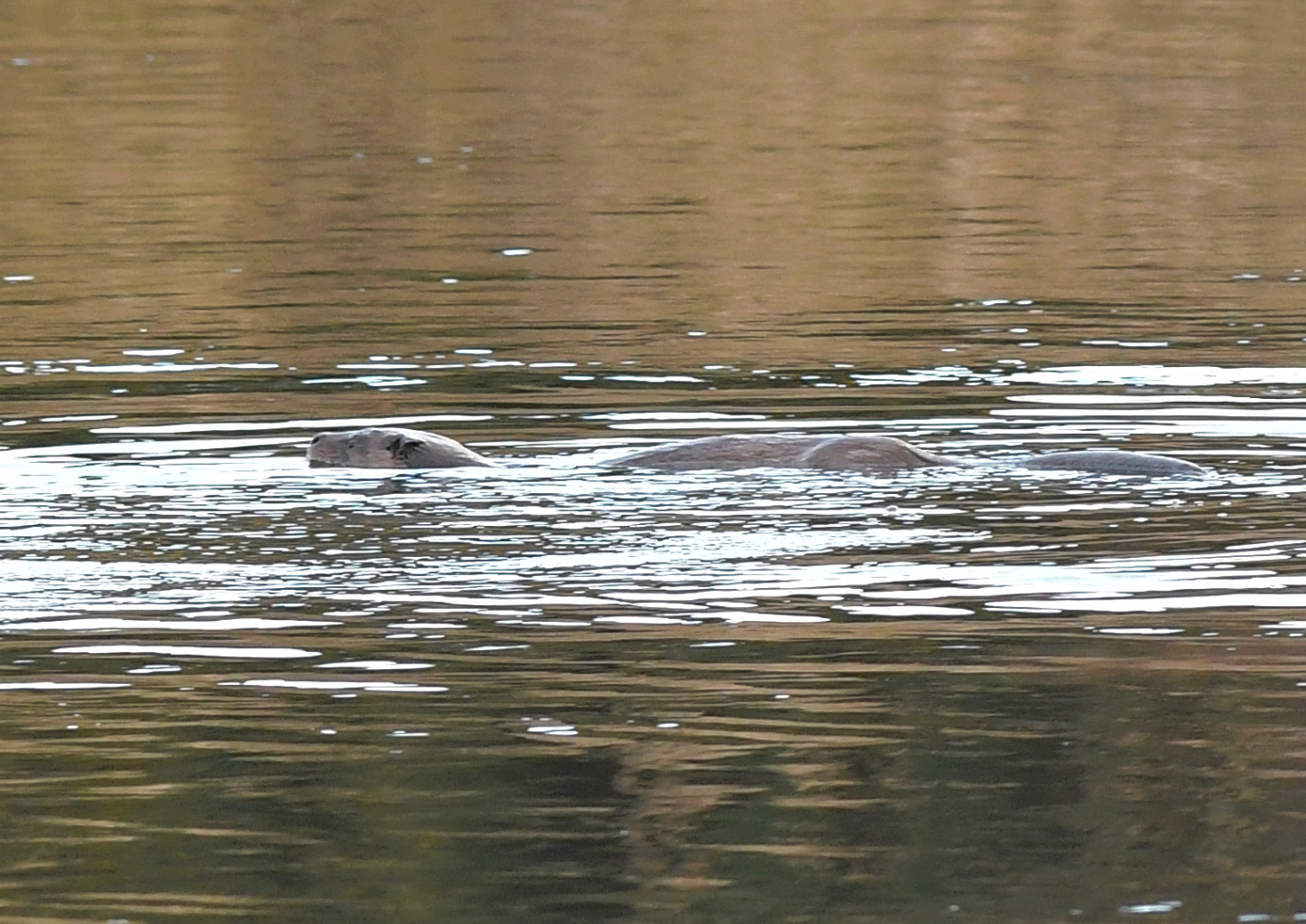A rare sighting of an Otter on Tuesday at the Lurgies, I usually see one, maybe two a year and I do spend a lot of time there. If you really want to see Otters, then I'd say Forfar Loch is the place, mostly the west end but sometimes one will cruise around the whole loch.
Despite the cold conditions Olive and I did a quick survey at Carnoustie Golf Links on Monday and managed to find 19 species on frozen ground and ice covered water features. List pasted from BirdTrack below.
4 Black-headed Gull (Chroicocephalus ridibundus)
2 Blackbird (Turdus merula)
13 Blue Tit (Cyanistes caeruleus)
4 Carrion Crow (Corvus corone)
2 Curlew (Numenius arquata)
1 Dunnock (Prunella modularis)
2 Goldeneye (Bucephala clangula)
2 Great Spotted Woodpecker (Dendrocopos major)
4 Great Tit (Parus major)
2 Herring Gull (Larus argentatus)
6 House Sparrow (Passer domesticus)
6 Jackdaw (Coloeus monedula)
5 Magpie (Pica pica)
5 Mallard (Anas platyrhynchos)
5 Mute Swan (Cygnus olor)
1 Pied Wagtail (yarrellii) (Motacilla alba yarrellii)
2 Robin (Erithacus rubecula)
1 Song Thrush (Turdus philomelos)
1 Wren (Troglodytes troglodytes)
Otter in the South Esk at the Lurgies, I never got anywhere near it as it fished its way downstream and disappeared
Otter in the shade of the south bank, just about to climb out and mark its territory
Grey Partridge, the first I can recall seeing at the Lurgies, it was with another nine and they caught me with the wrong set up
Great Spotted Woodpecker at Carnoustie Golf Links, seen squabbling with a second bird near the practice ground
Oystercatcher, probably looking for some ground which wasn't frozen to feed in
Currently the winters most obliging bird species, they're all around and keen to pose. One at the Lurgies today hopped right up to my feet! This one was at Carnoustie.
Eurasian Otter from Wiki,
The European Otter (Lutra lutra), also called the Eurasian Otter, inhabits Europe, most of Asia and parts of North Africa. In the British Isles, they were common as recently as the 1950s, but became rare in many areas due to the use of chlorinated hydrocarbon pesticides, habitat loss and water pollution (they remained relatively common in parts of Scotland and Ireland). Population levels reached a low point in the 1980s, but are now recovering strongly.







No comments:
Post a Comment